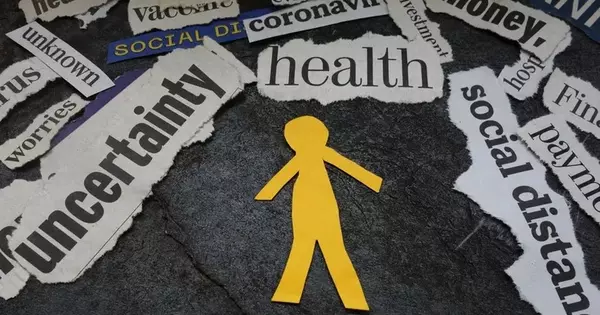The COVID-19 pandemic has had a significant impact on the mental health of children and young people around the world. The disruption to daily life, social isolation, and fear of contracting the virus have all contributed to increased stress, anxiety, and depression among children. One of the most significant impacts has been on the education system, with many schools closing or switching to remote learning. This disruption has led to feelings of loneliness, boredom, and frustration among children, as well as a lack of structure and routine.
New research from UT Southwestern and Children’s Health reveals the impact of COVID-19 on children’s mental health. A separate study, funded by a $2.5 million grant from the Eunice Kennedy Shriver National Institute of Child Health and Human Development (NICHD), will look into the best way to use oxygen during preterm infant resuscitation.
COVID-19 and mental health
A study led by Jacqueline Bolt, M.D., a UTSW Pediatric Emergency Medicine Fellow, looked at how the patterns and outcomes of pediatric mental and behavioral health (MBH) visits to the ED at Children’s Medical Center Dallas changed before and after the pandemic. Dr. Bolt and her colleagues studied trends before the pandemic by collecting information from electronic medical records on patients who visited the ED from March to September between 2017 and 2019, then comparing the same period between 2019 and 2020.
These findings highlight specific areas in pediatric MBH care that may benefit from targeted interventions. Future research is needed to investigate longer-term trends as well as effective prevention and intervention strategies.
Dr. Bolt
According to the findings published in Pediatric Emergency Care, ED visits for pediatric MBH gradually increased in the years preceding the pandemic, mirroring national trends. Despite a decrease in overall ED visits for MBH in 2020, the proportion of total visits increased by 42.8%. Females, adolescents between the ages of 15 and 17, and non-Hispanic patients had the highest increase in MBH visits. Pediatric patients who presented to the ED in 2020 for MBH treatment were significantly more likely than previous years to be admitted or transferred for inpatient psychiatric care.
“These findings highlight specific areas in pediatric MBH care that may benefit from targeted interventions,” Dr. Bolt said. “Future research is needed to investigate longer-term trends as well as effective prevention and intervention strategies.”
Other UTSW and Children’s Health researchers who contributed to the study include Faisalmohemed Patel, Laura Stone, Divya Pandian, Matthias Manuel, and Nakia Gaines.

Oxygen and preterm infants
The NICHD grant will fund a multicenter randomized controlled trial in preterm infants to be led by Vishal Kapadia, M.D., UT Southwestern Associate Professor of Pediatrics. It builds on a pilot study conducted at UTSW that tested the optimal target oxygen saturation range that decreases oxygen toxicity and allows the lungs of vulnerable preterm infants to better adapt to the environment outside the womb.
Dr. Kapadia explained that additional oxygen is often needed to maintain normal blood oxygen levels in extremely preterm infants at birth because their lungs are not well developed. Too much oxygen use at birth has been linked to oxygen toxicity, which can result in injury to immature organs including the lungs and brain. Too little oxygen use at birth may result in respiratory failure and organ injury due to low levels of oxygen in the blood.
To achieve this balance, national neonatal resuscitation program guidelines recommend starting resuscitation with low levels of a blended mixture of air and oxygen and gradually increasing the oxygen level to achieve target blood oxygen levels. These levels are based on expert opinion and data from healthy term infants who most likely did not have their umbilical cord clamped delayed. According to new research, healthy term babies who have their cords clamped at birth have higher oxygen blood levels than previously reported.
Dr. Kapadia’s team conducted a pilot study to determine optimal blood oxygen levels at birth for preterm infants, which will reduce oxygen toxicity and allow the babies’ lungs to better adapt to environments outside the womb. The pilot study on 75 preterm babies born at Parkland Memorial Hospital found that when delivered oxygen was adjusted to achieve higher blood oxygen levels than currently recommended (similar to healthy term babies undergoing delayed cord clamping), these newborns began breathing more quickly, reached a heart rate above 100 beats per minute sooner, had better brain oxygenation, suffered from less oxidative stress, and were more likely to survive without chronic lung disease.
Dr. Kapadia’s new study aims to confirm these findings in a much larger sample of 800 preterm infants born at medical centers across the country. “This research has the potential to transform preterm infant delivery room management worldwide and provide a simple and inexpensive way to reduce death and lung disease in this population,” Dr. Kapadia said.















